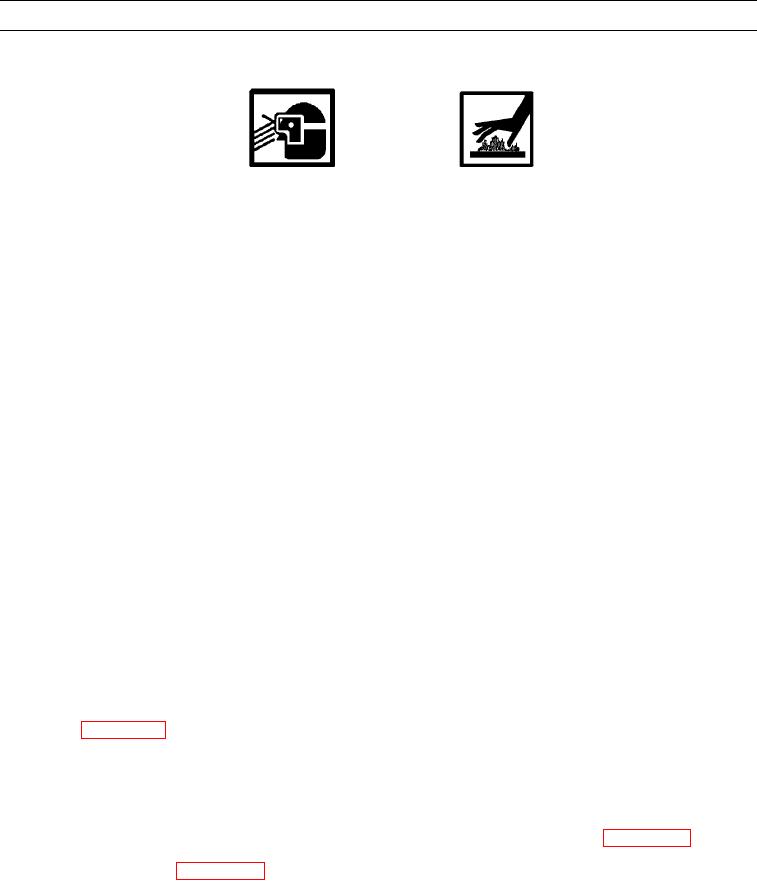
TM 5-3805-291-23-1
COOLING SYSTEM TESTS, INSPECTIONS, AND ADJUSTMENTS - CONTINUED
0012 00
COOLING SYSTEM INSPECTION
0012 00
WARN I N G
DO NOT service cooling system uness engine has been cooled down. This is a pressurized cooling
l
system and escaping steam or hot coolant may result in serious burns.
DO NOT remove cooling system ra iator cap when engine is hot. Allow engine to cool down.
d
Loosen cap to let any pressure out of cooling system, then remove cap. Failure to follow this warn-
ing may result in serious burns.
Wear effective eye, hand, and skinprotection when handling coolants. Failure to do so may result
in injury to personnel.
CAU T I ON
If pressure is shown on the indicator, push the release valve to relieve pressure before removing any
hose from the radiator.
N OT E
Coolant must be at correct level tocheck cooling system (TM 5-3805-291-10).
Level of coolant should not be more than0.5 in. (13 mm) from bottom of filler pipe.
Engine has pressure-type coolingsystem that has two advantages: They can operate safely at tem-
peratures higher than boiling point of water at range of atmospheric pressures and they reduce
cavitation in water pump.
Cavitation is formation of bubbles in liquidsby mechanical forces. Forming of air bubbles or
steam pockets is less common in pressure-type cooling systems.
Regularly inspect cooling system to identify problems before damage occurs. Visually inspect
cooling system before tests are made with test equipment.
For a better understanding of each sysem, review the appropriate section in Theory of Operation
t
1.
Check coolant level in cooling system (TM 5-3805-291-10).
N OT E
If coolant does not have the properties listed in step 2, drain and flush cooling system (WP 0041 00).
2.
Check quality of coolant (WP 0020 00). Coolant should have these properties:
a.
Color similar to new coolant.
b.
Odor similar to new coolant.
c.
Free from dirt and debris.
0012 00-2

